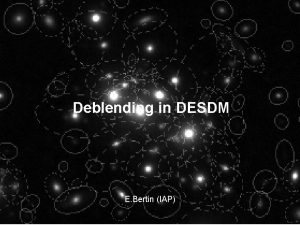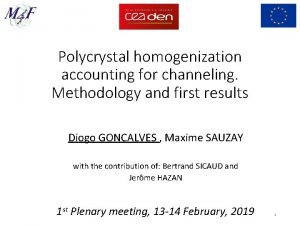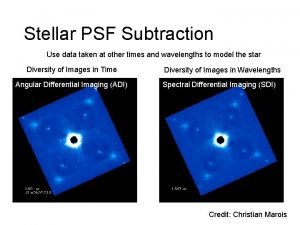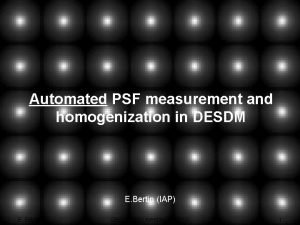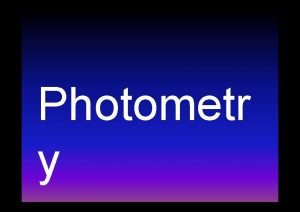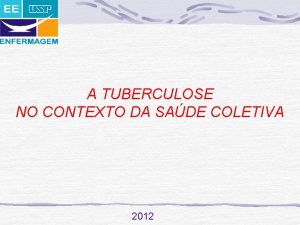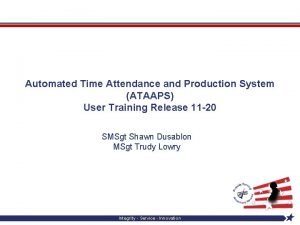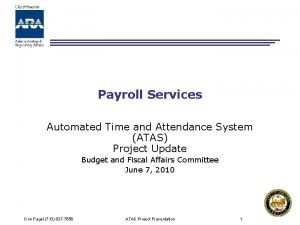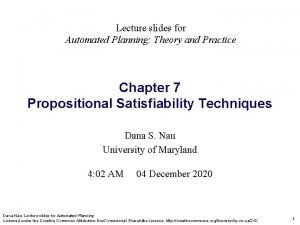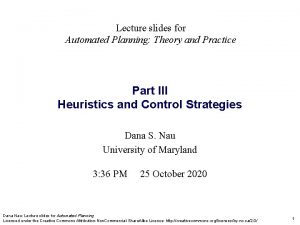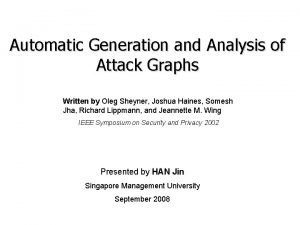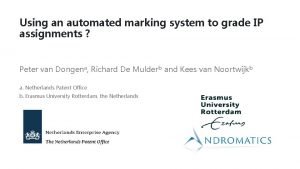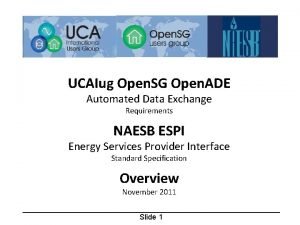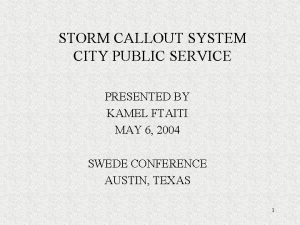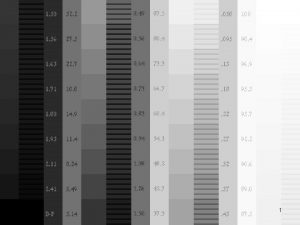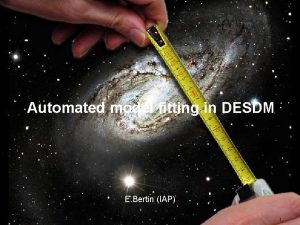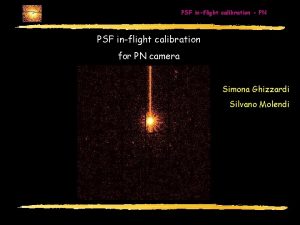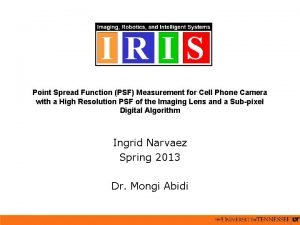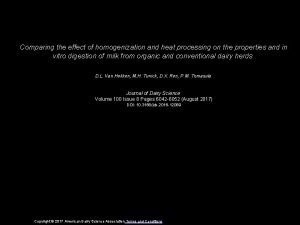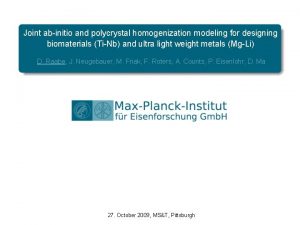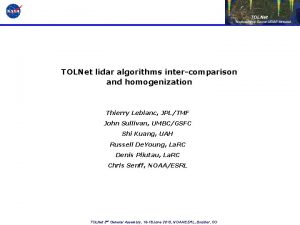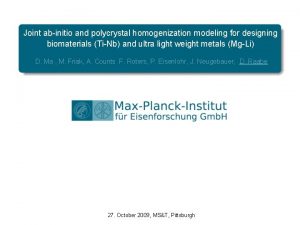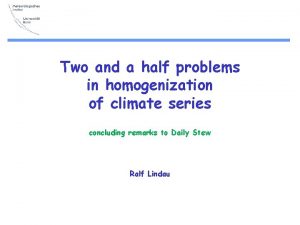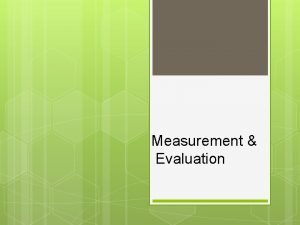PSFEx Automated PSF measurement and homogenization in DESDM

























- Slides: 25

PSFEx Automated PSF measurement and homogenization in DESDM E. Bertin (IAP) E. Bertin DES Munich meeting 05/2010 1

PSFEx PSF homogenization • History • Science requirements • PSFEX internals – Point source selection – PSF modeling – Modeling PSF variations • PSFEx in the DESDM – specific issues – Built-in quality control and metadata output – Pending issues and forthcoming developments E. Bertin DES Munich meeting 05/2010 2

PSFEx History • Development started back in 1998 (!) while working on the ESO Imaging Survey – Originally intended to provide accurate PSF models for crowded field photometry (e. g. Kalirai et al. 2001) • Used mostly for quality control at TERAPIX • Modeling of PSF variations refined in the framework of the EFIGI project (galaxy morphology) • PSF homogenization module developed for the DES project E. Bertin DES Munich meeting 05/2010 3

PSFEx PSF requirements from contemporary science • Faint galaxy morphometry – PSF Full-Width at Half-Maximum < 0. 9’’ – PSF FWHM must be mapped with an accuracy of a few % • Weak lensing studies – PSF ellipticity must be mapped at the 0. 1% accuracy level • Some existing and future wide-field imagers are undersampled: the PSF extraction software must be able to recover the PSF from aliased images. PSF image and distortion maps on a 1 sq. deg. field E. Bertin DES Munich meeting 05/2010 4

PSFEx: Modeling the PSF • Modern imagers behave as linear, translation-invariant systems (at least locally) and can be fully characterized by their Point Spread Function (PSF) • Knowledge of the PSF is needed for many image analysis tasks – image quality control (FWHM, elongation, asymmetry, distance to best-fitting Moffat) – PSF homogenisation – matched filtering – profile-fitting – star/galaxy separation – galaxy morphology – weak-lensing analyses E. Bertin DES Munich meeting 05/2010 5

PSFEx Automatic point-source selection E. Bertin DES Munich meeting 05/2010 6

PSFEx PSF modeling: Principle • For practical reasons, PSFEx works internally with rasterized PSF models are tabulated at a resolution which depends on the stellar FWHM (typically 3 pixels/FWHM) – – • Satisfy the Nyquist criterion + margin for windowed-sinc interpolation Handle undersampled data by representing the PSF model on a finer grid Minimize redundancy in cases of bad seeing Find the sample values by solving a system using point-sources located at different positions with respect to the pixel grid The PSF is modelled as a linear combination of basis functions b – “Natural” pixel basis b(x) • = (x-xb) Work with any diffraction-limited image (images are bandwidth-limited by the autocorrelation of the pupil) – Fourier basis – Gauss-Hermite or Gauss-Laguerre basis functions (aka polar Shapelets) b(r, • • ) Scale parameter ( ) adjusted to provide proper sampling Should provide a more robust model for data with low S/N – Others (e. g. PCA components of theoretical PSF aberration components for diffraction-limited instruments). E. Bertin DES Munich meeting 05/2010 7

PSFEx Solving in Fourier space Reconstructed NICMOS PSF Lauer 1999 Aliased portion of the spectrum E. Bertin Problem: noise is seldom stationary on astronomical images! DES Munich meeting 05/2010 8

PSFEx: solving in direct space • A resampling kernel h, based on a compact interpolating function (Lanczos 3), links the “super-tabulated” PSF to the real data: the pixel j of star i can be written as • • • The cb’s are derived using a weighted 2 minimization. The ai’s are obtained from “cleaned” aperture magnitude measurements Regularisation required for highly undersampled PSFs (FWHM <1. 5 pixel) – l 2 norm (Tikhonov) • PSF variations are assumed to be a smooth function of object coordinates F The variations can be decomposed on a polynomial basis Xl b Xl = E. Bertin DES Munich meeting 05/2010 9

PSFEx Recovered PSF with simulated, undersampled data Diffraction-limited FWHM ≈ 1 pixel Moderately crowded E. Bertin DES Munich meeting 05/2010 10

PSFEx Simulated, defocused data Diffraction-limited FWHM ≈ 7 pixels Moderately crowded E. Bertin DES Munich meeting 05/2010 11

PSFEx Gauss-Laguerre basis vs pixel basis on simulated images • Except for the simplest PSF profiles, shapelet decomposition does not seem to be more efficient than simple tabulation for precise modeling. – Typically a few hundred free parameters required in each case. Image E. Bertin Simulated PSF Recovered PSF: pixel basis Recovered PSF: shapelet basis Simulated PSF with pixellation DES Munich meeting 05/2010 Recovered PSF: pixel basis Recovered PSF: shapelet basis 12

PSFEx Modelling PSF variations: Reconstructed MEGACAM average PSF in the i-band • 5 th order polynomial in x, y: -PSFVAR_KEYS X_IMAGE, Y_IMAGE -PSFVAR_DEGREES 5 • Derived from 19, 000 point sources • 2/d. o. f. ~ 1. 3 • Processing time ~ 100 s on a 2 GHz processor E. Bertin DES Munich meeting 05/2010 13

PSFEx Reconstructed CFHTLS-D 1 PSF FWHMs and ellipticities in i E. Bertin DES Munich meeting 05/2010 14

PSFEx Make the PSF depend on other parameters • • 6 th order polynomial in MAG_AUTO: -PSFVAR_KEYS MAG_AUTO -PSFVAR_DEGREES 6 1670 point-sources from the central 4096× 4096 pixels of a photographic scan (SERC J #418 survey plate, courtesy of J. Guibert, CAI) FWHM ≈ 3 pixel E. Bertin DES Munich meeting 05/2010 15

PSFEx PSF variability mapping: advanced options • Principal component analyses at the pixel level from PSF model variations: PSFEx offers 2 possibilities (that can be used together) – within an image or a series of images: find the image basis with the smallest number of vectors that fits the variable PSF at a given MSE: -NEWBASIS_TYPE PCA_COMMON – trace hidden dependencies of PSF variations from a series of images (Jarvis & Jain 2004); 3 steps: 1. extract principal components of PSF variations from a series of image to obtain one set of coefficients per image 2. use the obtained coefficients as part of a polynomial variation model and fit them to the data 3. reconstruct the PSF model and its variations for each image: -PSFVAR_KEYS X_IMAGE, Y_IMAGE, HIDDEN 1 -PSFVAR_DEGREES 3, 2 E. Bertin DES Munich meeting 05/2010 16

PSFEx PSF homogenization • Co-addition: large pointing offsets + small number of exposures create jumps in the PSF at image boundaries è PSF homogenization • • • Bring all images to the same, circular PSF, using the variable PSF models DECam images are expected to be properly sampled R&D: Combine exposures with variable image quality 0. 77 ’’ 0. 94 ’’ 1. 32 ’’ 0. 94 ’’ – “Cheap” alternative to image fusion/Bayesian inference. – Impose the target PSF with median seeing to minimize noise correlation – Handle noise correlations on arcsec scales – Masking of artifacts is important Darnell et al. 2009 E. Bertin DES Munich meeting 05/2010 17

PSFEx PSF homogenization: making the kernel • We seek a convolution kernel k(x) which, when applied to the model PSF, minimizes (in the 2 sense) the difference with a target PSF. – Gauss-Laguerre basis has interesting “self-regularizing” properties (Alard and Lupton 1998) – kernel variations handled as polynomial in x and y. • Kernel components are saved as a FITS datacube • All computations done are in PSFEx (-HOMOBASIS_TYPE GAUSS-LAGUERRE option) y a’ Yl = E. Bertin cste x x 2 y DES Munich meeting 05/2010 yx y 2 18

PSFEx PSF homogenization: applying the kernel • Individual kernel components are convolved with the input image, multiplied by the corresponding polynomial term, and summed (psfnormalize program by Tony Darnell). – Very fast; convolutions done using parallelized FFTs. – PSF variations are assumed to be negligible on the scale of the PSF E. Bertin DES Munich meeting 05/2010 19

PSFEx Noise and image weighting issues for coaddition • Homogenized bad seeing images exhibit increased noise in a narrow spatial frequency range bad seeing image – Unweighted coaddition: S/N good seeing image decreased at high frequencies because of noise contribution from bad seeing images – Simple weighted coaddition: S/N decreased at low frequencies because of the reduced contribution from bad seeing images – Multiband weighting (E. Nielsen): 2 bands might be enough E. Bertin flat MTF homo MTF DES Munich meeting 05/2010 20

PSFEx Galaxy measurements on homogenized simulations Stack of 16 homogenized exposures with 0. 65’’<FWHM<1. 3’’ (including 0. 5 ’’ coma) Asymptotic magnitude E. Bertin Sersic+Exponential fit DES Munich meeting 05/2010 Disk scalelength (i<21) 21

PSFEx PSF modeling and galaxy model-fitting • Accurate enough for shear measurements? – Shear recovery test on Great’ 08 challenge data (Low. Noise sample) on both homogenized and non-homogenized versions homogenized • | e|<0. 0005 E. Bertin DES Munich meeting 05/2010 22

PSFEx Built-in quality control and metadata • PSFEx runs a variety of diagnostics – – Various 2 D histograms are produced Numbers are written to a metadata file in XML-VOTable format at the end of each run. • • An XSLT stylesheet that translates to HTML comes with the PSFEx package. High level libraries such as vo. table for Python can be used to parse the VOTable – • E. Bertin there a few stability and compliancy issues (can easily be fixed) More information at Astromatic. net DES Munich meeting 05/2010 23

PSFEx Built-in quality control (cont. ) E. Bertin DES Munich meeting 05/2010 24

PSFEx Pending issues and future improvements • Need to tune up the level of wings in the target PSF (Moffat beta parameter) – Depends on the details of the real average PSF • Improve image weighting • Dealing with undersampled images? • Fit star residuals instead of rejecting them! – Useful in crowded fields • Offer more customizable basis functions to describe PSF variations E. Bertin DES Munich meeting 05/2010 25
 Imcat conference 2020
Imcat conference 2020 Pros and cons of acculturation
Pros and cons of acculturation Cultural homogenization ap human geography
Cultural homogenization ap human geography Homogenization
Homogenization Psf
Psf Psf
Psf Photometr
Photometr Psf
Psf Psf
Psf Dibels psf
Dibels psf Automated time attendance and production system login
Automated time attendance and production system login Automated time and attendance payroll system
Automated time and attendance payroll system Automated planning theory and practice
Automated planning theory and practice Automated build process
Automated build process Automated planning theory and practice
Automated planning theory and practice Automated planning theory and practice
Automated planning theory and practice Automated generation and analysis of attack graphs
Automated generation and analysis of attack graphs Automated wordpress deployment
Automated wordpress deployment Automated exam marking
Automated exam marking Cimpap
Cimpap Automated callout system
Automated callout system Owasp automated threat handbook
Owasp automated threat handbook Automated certificate of eligibility
Automated certificate of eligibility Regional automated property information database
Regional automated property information database Automated cashier system
Automated cashier system Automated valuation model uk
Automated valuation model uk
